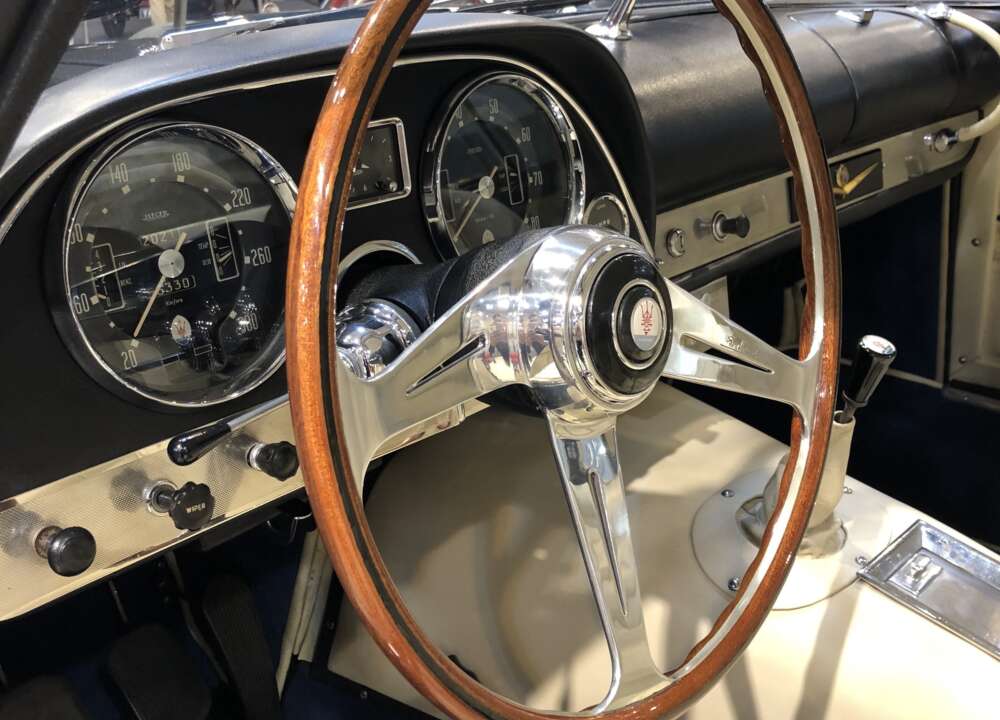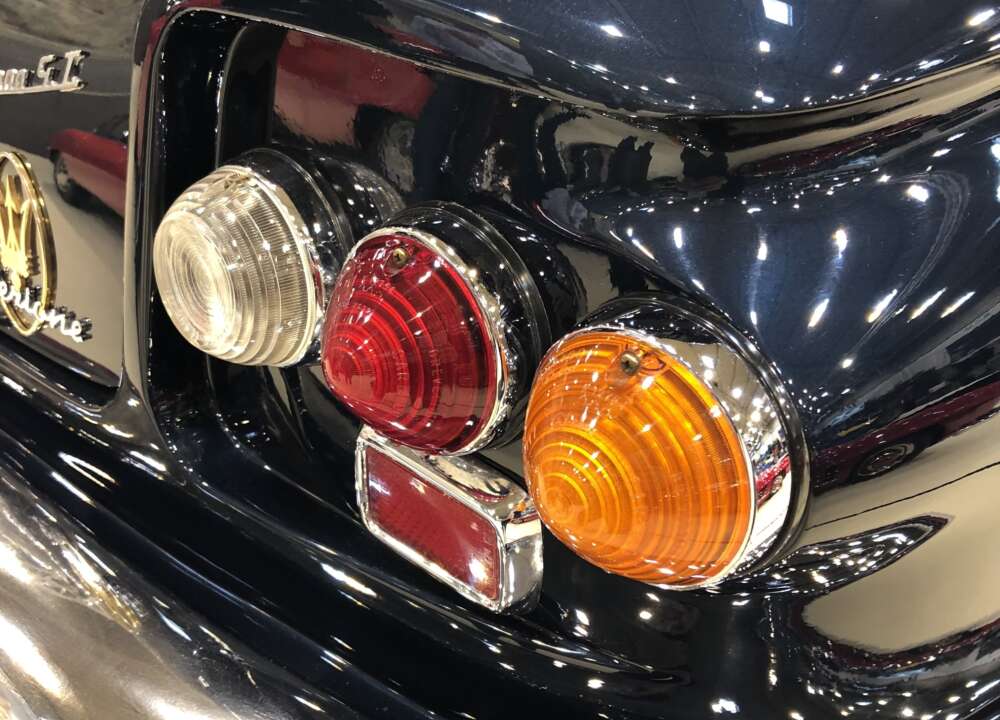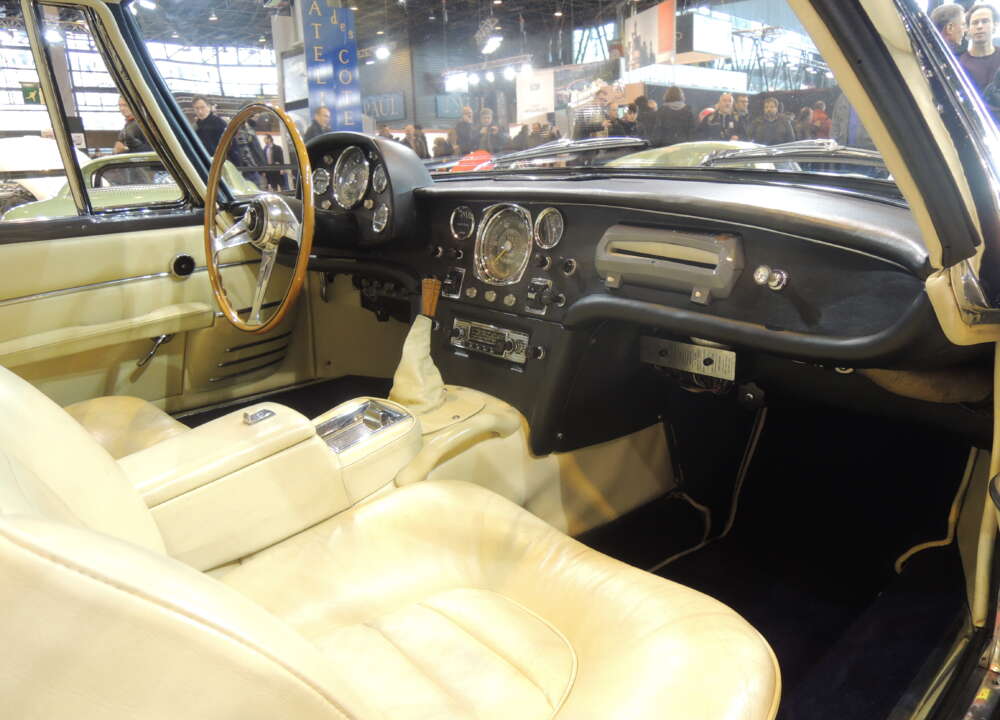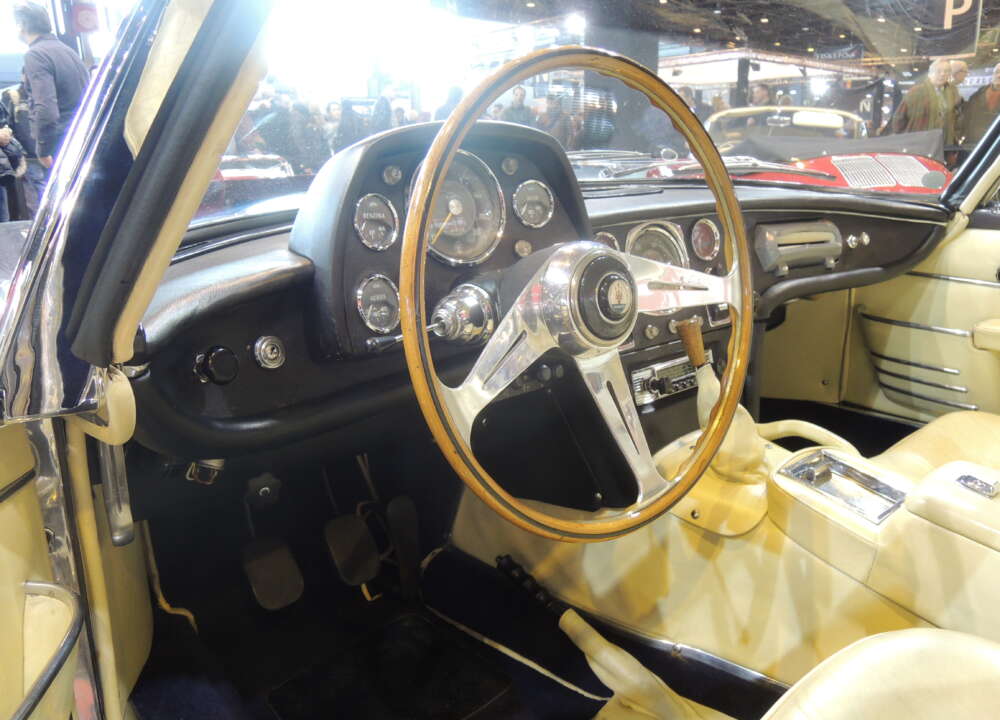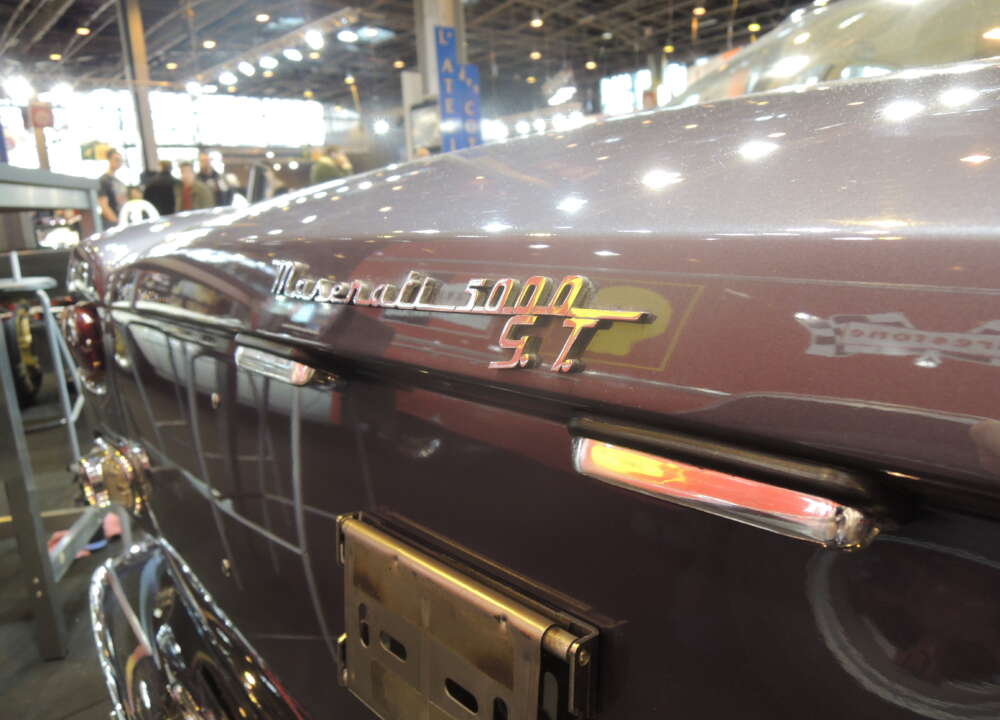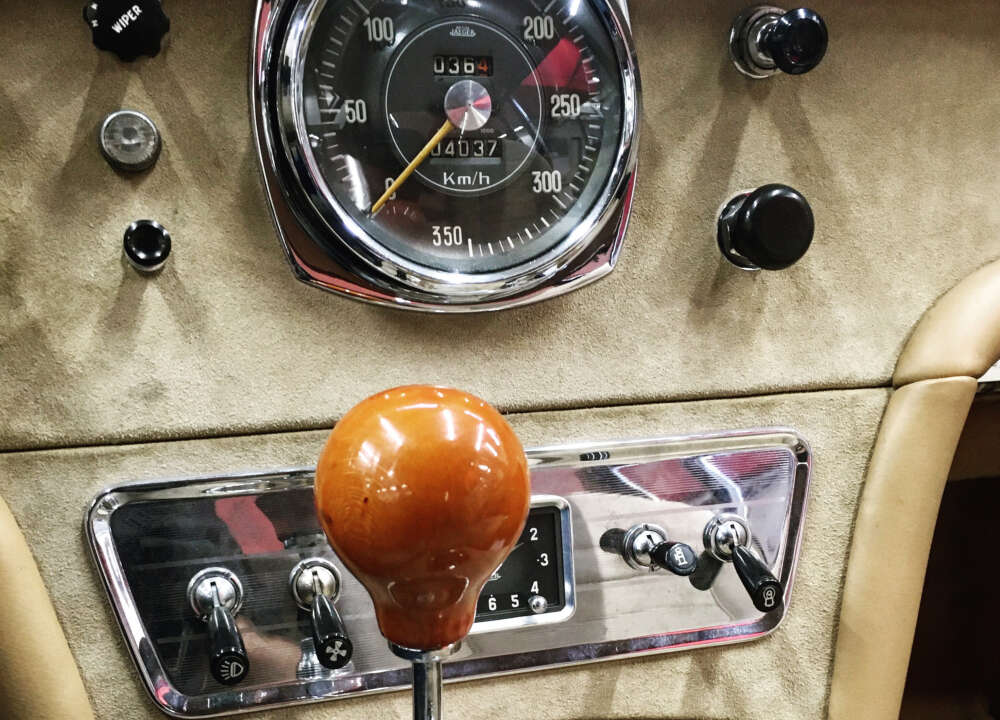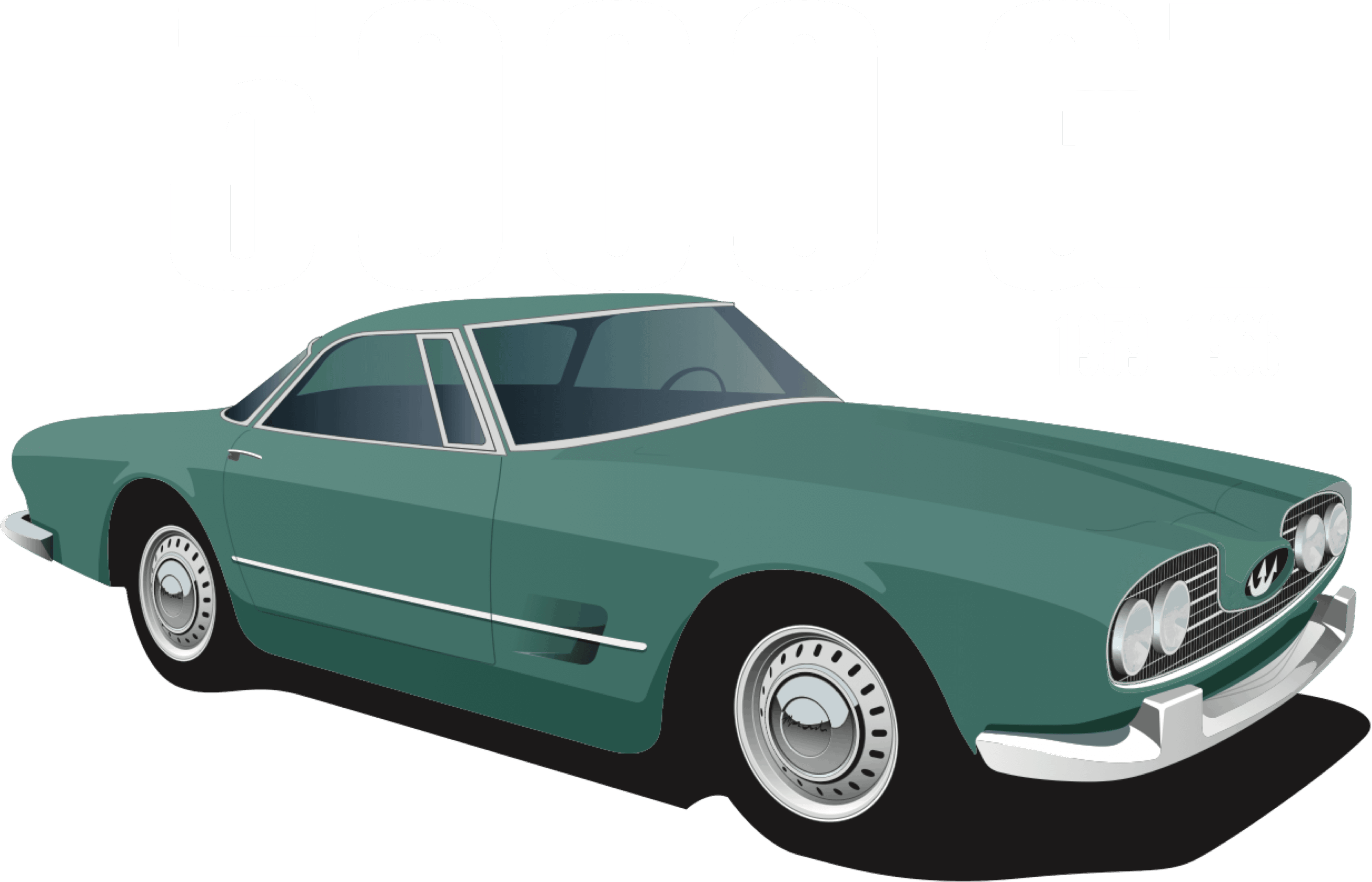
The first supercar and most exclusive Maserati built for the Shah of Iran, the Aga Khan and captains of industry.
Apart from one-off cars, the 5000GT is the only road car spawned by an Emperor, quite a distinction. The ruler of Persia loved fast cars and owned many. He had tried a 3500GT, liked it but yearned for more power. Via the Embassy in Rome, he summoned Omar Orsi to a meeting. This historic rendezvous took place in Viareggio, not far from a Villa he owned in Santa Margherita Ligure. He explained his wishes and Orsi, while writing notes of the Imperial request, told what could be done. Essentially a 3500GT improved to cope with the power of the racing V8 coming from the 450S, but more civilized for road use. This was a Godsend for Viale Ciro Menotti as it paid for the development of a new model, not just a one-off. Maserati had just faced a significant financial blow and had to cease racing, so the timing was perfect.
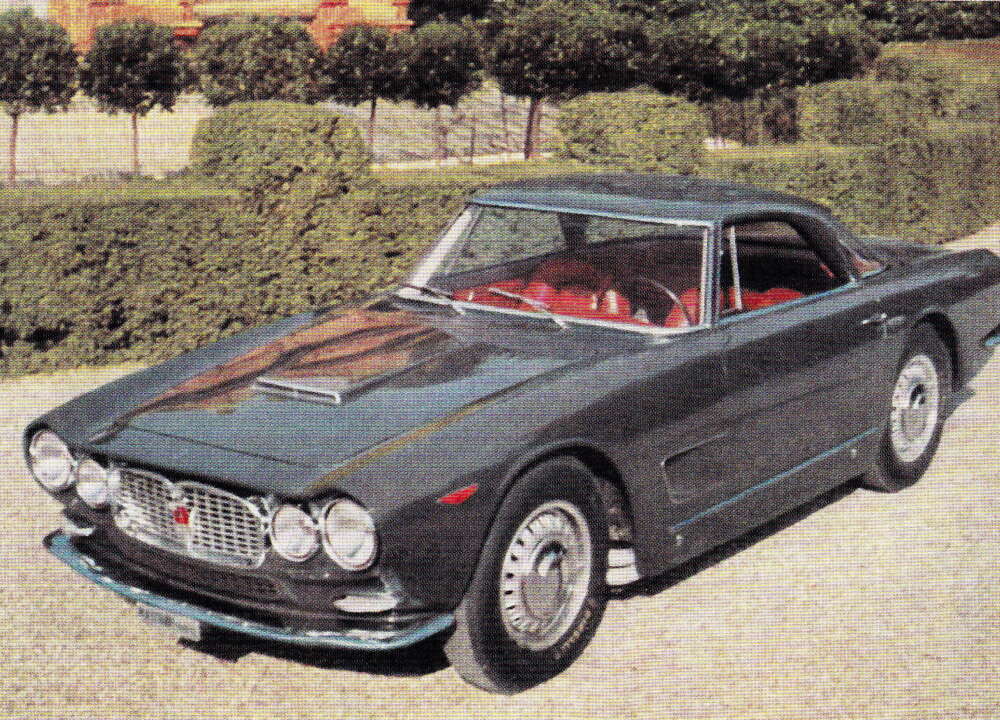
Touring was chosen to design the Shah’s motorcar. Still, the first drawings by their designer Carlo Felice Anderloni were flatly refused by his Imperial Highness. Finally, it was by inspiring himself with Persian architecture that he created the design which was approved. Its main characteristic was a spike-like oval-shaped protuberance which held the Trident chrome emblem in its midst, in a dip in the upper reach of the radiator grille. The rest of the body was more conventional yet suitably grand. The world premiere took place at the 1959 Turin show. By then the first car had already left to be delivered to the Shah but the second car, identical, was on the stand.
The first two cars really did use a 450S engine. The later ones used a completely different engine like that in the Tipo 151 cars. The changes also included the use of chains and fuel injection. Chains replaced the noisy gear driven camshafts and the capacity was now 4941cc. Lucas fuel injection was chosen to replace carburettors making it even more user-friendly on the road. The brakes were discs at the front and drums at the rear. The gearbox at first was four-speed ZF with later cars –after the first two- getting five-speed gearboxes as well as four-wheel disc brakes.
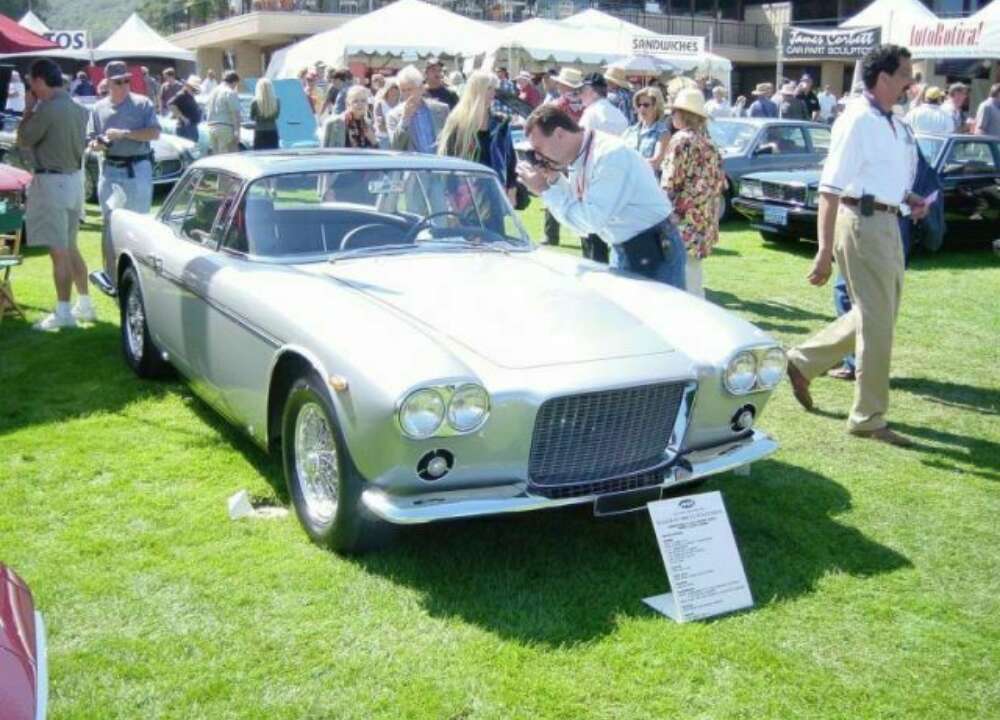
Three cars in total were built by Touring. The owner of the Kyalami circuit in South Africa, Basil Read, got the second one which was used for a magazine test drive exceeding 170mph with perfect ease and impressive stability. Those lucky enough to have driven one report excellent handling if you respect its weight and a particularly dramatic and enjoyable engine sound.
Allemano built by far the highest number of 5000GTs, two-thirds of the production, with 22 cars. It was a simple yet effective and imposing design that duly projected power and speed.
Frua created one of the most successful designs, three of them being made, one for the second Royal to order a 5000GT: Prince Karim Aga Khan.
Monterosa built probably the least successful design sort of a tamed down version of the Touring theme. It looks somewhat clumsy, and only two were built.
Bertone’s one-off 5000GT was styled by a then very young future star, Giorgetto Giugiaro and it is clearly one of the most handsome 5000GTs with fluid lines. It still to this day looks like nothing else, a real design success yet also the most discreet and tasteful of the lot.
Contrary to general believe Vignale was not commissioned by American America’s Cup winner and racing team owner Briggs Cunningham to build one. That car with chassis AM103.016 with a very sloping nose with “eyelid” covered headlights was designed by Giovanni Michelotti and he also built the car. Michelotti had opened his small shop to produce his prototype and one-off. Proof of this is found by Dottore Adolfo Orsi in his vast archive *.
Pininfarina built a one-off for Italy’s king of cars, Fiat descendant Gianni Agnelli. He had numerous bespoke specials in his life. This one had a nose à la Facel Vega or rather like the 375 America Ferrari he had also ordered. This car, therefore, has little Maserati DNA except under the skin and it is perhaps better that he chose for it not to carry any badges at all. It was very much an unofficial car, certainly never showed publically during his ownership.
* Sources of proof are:
a) a note that Michelotti had opened his small “officina” in 1959;
b) the Maserati build sheet which mentions Michelotti;
c) a period Maserati correspondence with Briggs Cunningham which mentions Michelotti.
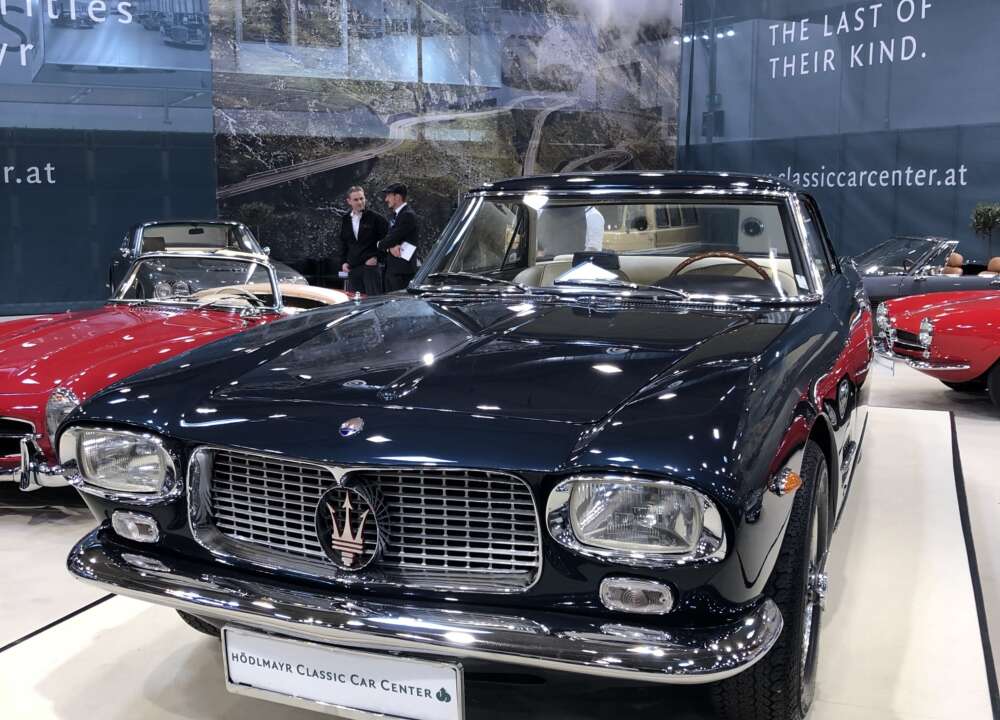
Finally, there was a one-off by Ghia, with sloping nose and rear, quite attractive. This one was sold to the Industrialist Innocenti family and later disappeared. For decades. Rumour had it that it might still be in some building on the Innocenti estate, others thought it might be in the Middle East, but most had given up hope long ago. It was literally the Loch Ness monster of Maserati history. Then lo and behold in 2017, it turned out that it had been in Saudi Arabia all that time with a family. Alas, it had been stored outside and had rusted very severely, but it was very complete, nothing had been stolen from it. It was sold at auction in 2019 and should emerge all rebuilt.
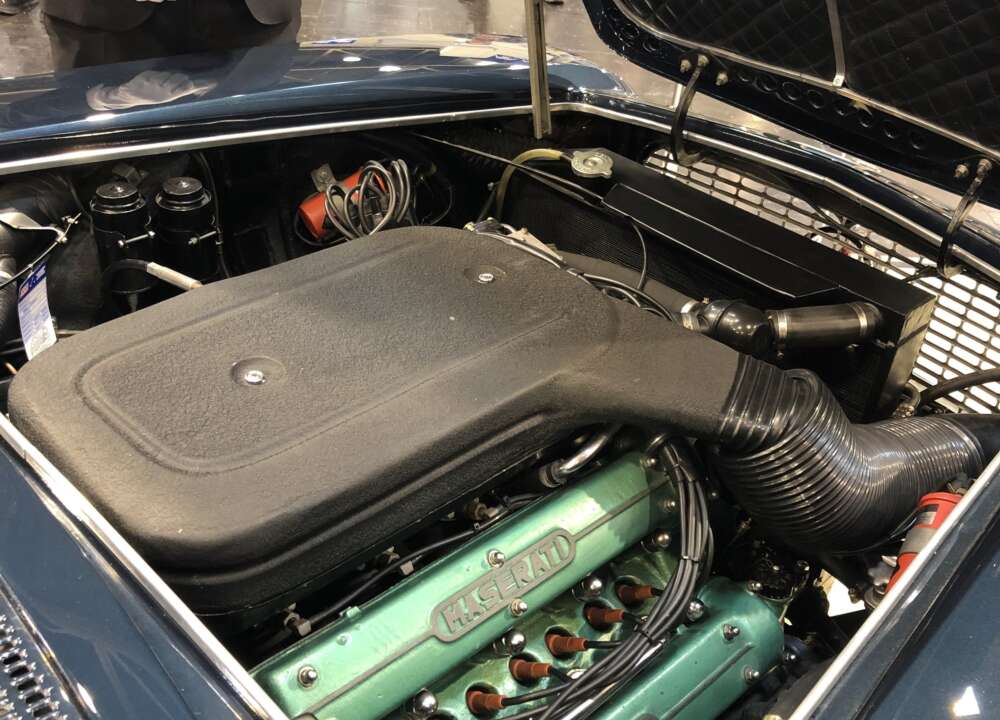
Specifications
There were some client complaints about the engine running rough and not revving freely. During engine restorations decades later it was discovered that the balancing of the crankshafts was off. Once this was fixed, a lot of problems disappeared. Restorers have also felt that the way the factory-tuned the fuel injection was overly complicated. This raises the debate about leaving cars as they left the factory or not. Originality is, in most cases, preferable, but there can be exceptions.
34 cars built between 1959 - 1966.
Engine
V8, light-alloy block
4950 cc, 4941 cc from 1961
Power output: 340 hp; 325 hp from 1961
Body
Two-door, 2+2 Coupé, in aluminium or steel.
Designed by Pininfarina, Touring, Monterosa, Allemano, Ghia, Bertone and Frua
Performance
270 kph.
Competitors
There is but one competitor: the Ferrari 500 Superfast. It had a five-litre engine, 400hp and about the same number were built: 36 or 37 depending on records. The Shah also had one as did the Pink Panther actor Peter Sellers –he and his wife Britt Ekland also had Maseratis- and a Dutch Prince. One sold for 2,7M US$ at the RM Sotheby’s Monterey auction. They are valued much higher and are usually seen in Concours such as Villa d’Este, owned by older major collectors who barely drive them.
Valuation
There is, of course, no market per se for these cars, they change hands occasionally either at auction or privately. RM Sotheby’s sold chassis AM103-016 at Monterey August 18, 2017, for Euro 866.910. A year later same place same auction company, they sold chassis 103-040 at Monterey August 25, 2018, for Euro 763.667. This is more realistic than the two million asked for another. The Ghia 5000GT AM103-018 mentioned above was sold, in its fossilized condition, by RM Sotheby’s at the 2019 Monterey auction on August 17 for US$533.000 (=Euro 483.800). Some years before in 2011 Bonhams at its own Monterey Quail Lodge auction, August 19 had sold chassis AM103-046 for US$ 557.000 (€ 504.757). As expected values of these extremely rare creations rise, reflecting the demand exceeding the supply.
We are aware that the valuation of this car is very subjective and depends on many criteria. That is why auctions are used as a barometer to sense where the market is moving. However, premium restored or preserved classic Maseratis change ownership through private sales ( and seldom in an auction). As a result, rarely do we discover the price for an off-market transaction.
Persuasion
Should you aim to buy one if you can afford it? No question at all. The 5000GT sits at the very top of not only Maserati’s but Italy’s Grand Touring car hierarchy just like its Emperor creator outranked Kings and Princes. Likewise the Ferrari 500 Superfast was just a luxurious offering by the house of Maranello for its more upper-crust clients.
In contrast, only the 5000Gt can claim to have been spawned by the dream of an Emperor. Such a rolling piece of art and history is an event by itself with incredible gravitas and is not only welcome but assured of a leading role in any concours, show or classic rally. Just be ready and be quick to pounce when the opportunity comes but asking the major auction houses and dealers is always a good idea.
Initial texts by Marc Sonnery.



